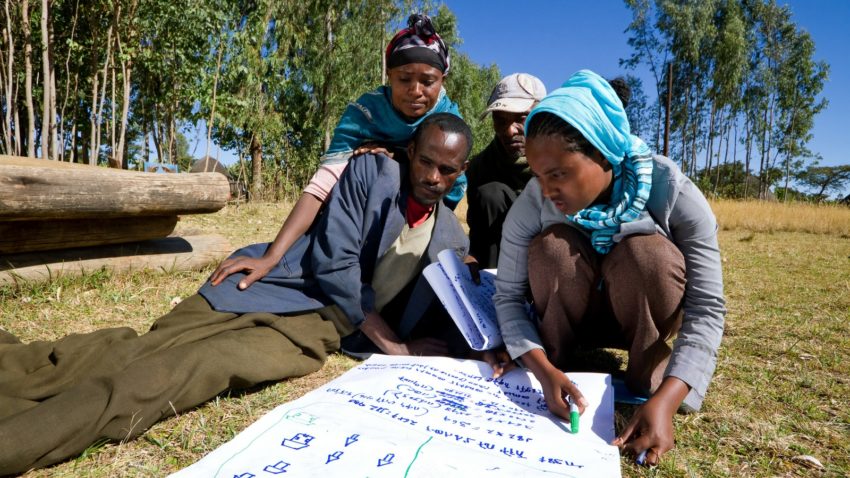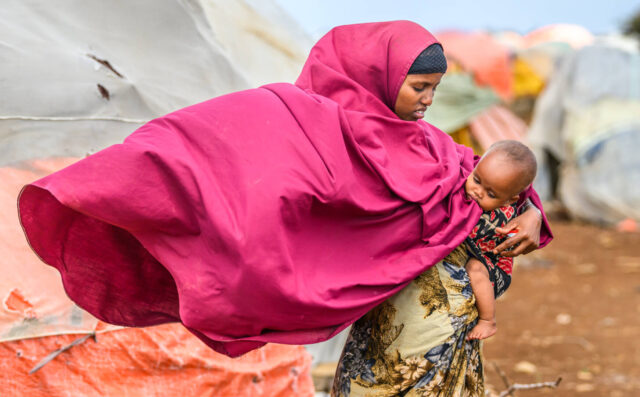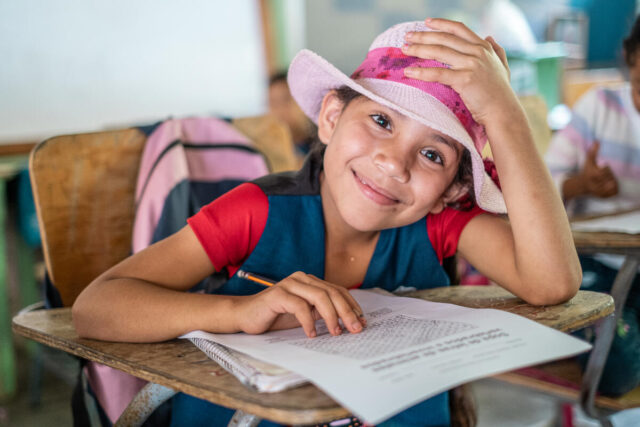Why World Vision? Today’s Q&A with Joel Hughey, World Vision’s senior director of program insights and results, explores World Vision’s unique approach to community development.
* * *
What are the key ingredients to World Vision’s community development approach?
World Vision’s core mission is to focus intentionally on the well-being of children. By partnering closely with local community groups, churches, families, and children themselves, we address the root causes of poverty that directly impact children, especially the most vulnerable. We believe that boys and girls should enjoy good health, be educated for life, experience the love of God and their neighbors, and be cared for, protected, and participating in their own development.
Our vision: “For every child, life in all its fullness. Our prayer for every heart, the will to make it so.” We believe that the best way to fulfill this vision is with rigor and integrity that honors the communities we serve and our donors. We’re not only focused on individual children, but on all of the surrounding conditions that impact children’s lives.
What’s different about World Vision’s sponsorship model? Why do we believe in it so strongly?
Early in my career, I had concerns about child sponsorship, many based on ideas that may have been inaccurate to World Vision’s approach. I’ve come to be a strong supporter of sponsorship because I believe it can be a transformative tool for children and sponsors while providing a unique platform for long-term community development. Few other funding sources provide this kind of stable support.
I believe in child sponsorship because it improves the well-being of sponsored and non-sponsored children equitably; brings hope and joy to children, their communities, and supporters; improves children’s sense of self and value; gives a voice to all children and communities, empowering them as agents of change; enables community-based care and protection of children; and helps supporters grow their understanding of poverty and how they can make a difference.
World Vision sponsorship is designed toward our belief that the most effective way to provide for a child is to address issues at the community level to improve the situation for all children and to reflect God’s love as we serve.
How is community development connected to child sponsorship?
Sponsorship supports our community development focus by enabling long-term engagement, fostering an approach that centers on sustainable change for children and their communities, and enabling children’s holistic development — connecting children, sponsors, and their communities.
It also strengthens support networks for children and their families while creating a platform for community development that attracts additional resources to communities and helps supporters understand poverty, engaging them as advocates for change.
Why does World Vision use this model?
We believe the best way to build better lives for children is to invest in the communities in which they live. Strengthening communities and families creates a safety net that empowers children to experience fullness of life. By partnering with families and local community groups, we strengthen the good work they’re already doing, ensuring that the ownership of their children’s future remains in their hands. We work best by supporting those who already have a vested interest in the future of their children.
By working with community stakeholders, we aim to effect change at a structural level. Many issues and challenges in these communities have deep roots, and it takes time to address these issues in constructive ways that will lead to lasting change.
What is an ADP?
ADP is World Vision’s acronym for area development program. It is a distinct geographical area where we partner with local stakeholders to improve the well-being of children through multiple sector projects aimed at the root causes of issues that negatively impact children. These geographic areas can vary in size, context, and population. Typically, they are where the children and families we help live and work. Each ADP has its own staff and design, and while each ADP is unique, they all seek to support families and communities to address child well-being.
World Vision U.S. donors support close to 400 of the more than 1,600 total ADPs around the world.
How does an ADP work?
When an ADP begins, we work with the community to assess their needs. While identifying partners, we create a collaborative plan based on the community’s vision for its children. Together, we look at what’s already being done, what more can be done, and what we can do together.
Often communities select key areas of focus for our work, which may cover critical topics such as health, education, economic empowerment, and child protection. Each project is selected with children in mind, and children often participate and even lead the community through important changes.
Throughout our involvement in an ADP, we work with the community to manage, monitor, and evaluate progress toward the ADP’s goals. After a number of years, World Vision may transition out with the expectation that the community stakeholders are equipped and empowered to sustain the work. While we walk with communities for a time, we know that these stakeholders have been and will be there for much longer.
How does World Vision select new ADPs?
A few factors include access to the geographical area; population density (high enough for sponsorship to work, small enough to be manageable); risk factors such as natural disasters and violent conflict; the availability of infrastructure; and the community’s willingness to participate. Most of our national offices carry out assessments to better understand where to invest, often influenced by where poverty is greatest, as well as looking for areas that are under-served by other organizations.
What’s the average life cycle of an ADP?
It varies depending on the community’s needs. We tend to carry out three project cycles, each approximately five years long. Many of our ADPs transition after about 15 years. Some ADPs ask for additional time to meet critical goals or to ensure that the community is able to sustain the changes. We want to stay as long as we can help bring change without creating dependencies.
What is your role with World Vision and the ADP model?
I am the senior director for program insight and results with World Vision’s International Programs Group. I lead a team that develops and demonstrates evidence of our contribution to child well-being. We work with national offices and ADPs to learn from data and research to better inform donors of the effectiveness of our work, improve practice in the field, and influence how we make decisions.
How did you come to do what you do?
After being raised by missionary parents, always focused on international affairs, I had the opportunity in college to work with Project Mercy, a small community-based organization in Ethiopia. That experience was transformative for me and led me to realize that I wanted to dedicate myself to working on issues of poverty in the developing world.
After undergrad, I returned to work in Ethiopia as a community development organizer. Later, I attained a master’s degree in international development from Tulane University. And after working with World Relief for a number of years, I found my way to World Vision, where I’ve been for five years.
World Vision’s ADPs and community development begin with child sponsorship. Join us! Fight poverty holistically for just $39 a month by sponsoring a child.



Comments